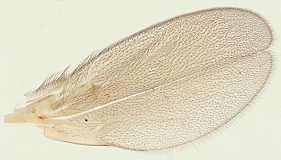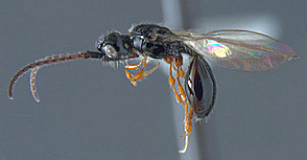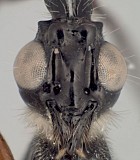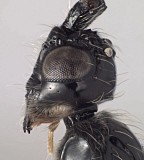Coptera Say
See additional information under Coptera robustior and Coptera silvestrii
Psilus and Coptera can be distinguished as follows:
Psilus: occipital carina abs; subcosta complete, though sometimes weak apically; forewing of female never incised.
Coptera: occipital carina present though sometimes poorly developed; subcosta incomplete; forewing of female (rarely male) deeply incised.
Coptera haywardi has been reported from Mexico, Argentina, and Brazil (De Santis 1967, Loiacono 1981, Sivinski et al. 1998, Aguiar-Menezes et al. 2003).
See biology/hosts section above for distribution of Nearctic species with host records.
Distribution and host records (nearly all Tephritidae) for the species of Coptera from the Nearctic region, listed below, are taken from Muesebeck’s (1980).
Coptera cingulatae — New York (from Rhagoletis cingulata and R. fausta), Kansas (from R. suavis), Connecticut (from R. pomonella), Ontario, Maryland, West Virginia, South Carolina, Georgia, Florida, Missouri.
Coptera evansi — Arizona, California (from Epochra canadensis), Washington (from Rhagoletis fausta), Arizona (from lab reared Rhagoletis sp. puparia), New Mexico (from lab reared R. completa and R. juglandis), Colorado, Texas.
Coptera occidentalis — California (from Rhagoletis completa), Oregon (from R. cingulata).
Coptera pholeomyiae — Louisiana (from Pholeomyia comans in a nest of Atta texana), Texas (from an ant nest).
Coptera pomonellae — Maine (from Rhagoletis pomonella), Connecticut (from Rhagoletis pomonella), New York (from Rhagoletis pomonella), Minnesota (from Rhagoletis pomonella), Kansas (from R. suavis), South Carolina.
Coptera punctiger — Texas (possibly from Drosophila), South Carolina, Michigan, Texas.
Coptera strauziae — Manitoba (from Strauzia longipennis puparia), Ottawa (from S. longipennis in Helianthus tuberosus), South Carolina.




